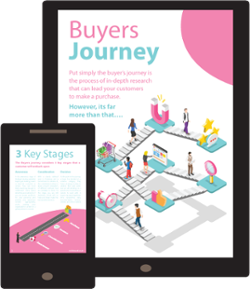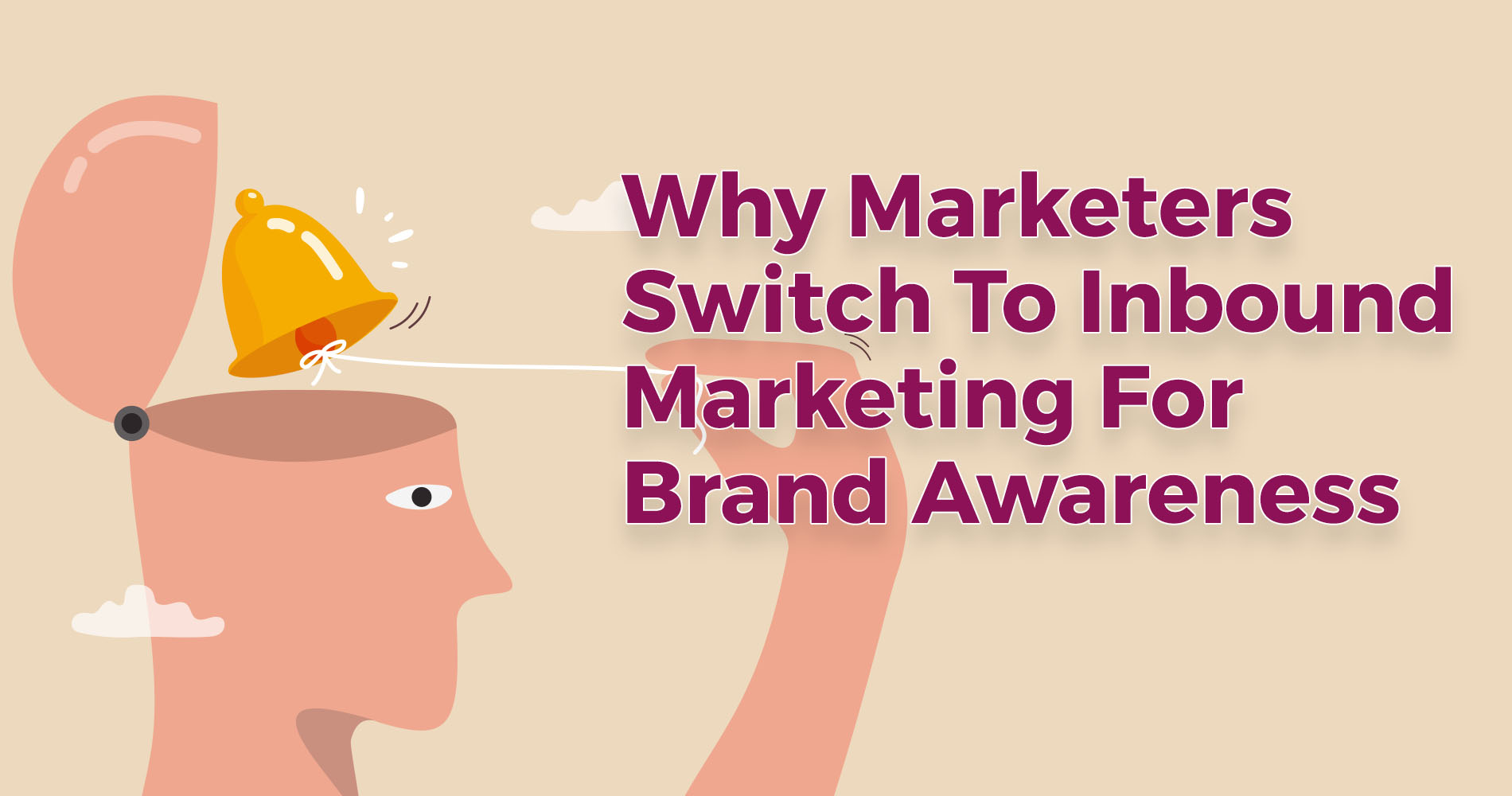You can’t sell products or services to consumers if they don’t know about them. And once you do manage to get your brand and business in front of them, they won’t sign up if you neglect the first step of the buying process - buyer awareness. The buyer awareness stage is achieved when your target customers are made aware of your brand, name, and any products or services that you have to offer that can help meet their needs.
Therefore, one could argue that the whole concept of a sales funnel involves marketing content specifically at different points in specific stages of the journey down the funnel. This makes such content types vital for certain moments in time as well as signifying urgency through time vs effort commitments by implementing what works at top levels against what doesn't.
When it comes to the awareness stage of marketing, you have business content geared for appealing to as many people as possible, a.k.a. B2B or Business-to-Business marketing. At this point in your customer life cycle, you're at the top of their funnel and you need content that is going to appeal to anyone who is looking for what you offer and explain it in a way that gets them excited because awareness is the first step towards forming a connection with your audience. In this article, we’re going to be taking a look at how to create an effective awareness stage for your buyer’s journey campaign.
You just cannot negate its importance, the awareness stage is so important! It's the first step of your lead generation funnel and it can either make or break all the other steps. In this blog, we're going to cover how you can create amazing-awesome-interesting content that attracts potential customers, so keep an eye out for our next posts on how to create quality content!
Awareness Stage defined
While there may be a variety of phases in the buyer’s journey, we can see that the first phase is awareness, which is followed by consideration. The goal of this stage is to introduce potential clients to your product or service and what it could do for them. Customers are still in an initial research phase at this point and have not yet decided which brand they wish to purchase from
For those who recognise symptoms of a certain business issue, like lack of mobility, for example, you can use content marketing strategies such as blogging and SEO to create content that discusses what these concerns mean or highlight why your product would benefit them if their issue involved said problem. You’ll find that some web visitors who devour articles about every business advantage will be more likely to come back later when they need to buy a solution!
Why is the Awareness Stage important?
The buyer awareness stage is about developing content that attracts leads and encourages those leads to become potential customers. Creating this content aims to get your business and its products or services in front of those who would potentially have an interest in what you have to offer but may not know it or anyone who listens!
Awareness is the launchpad for your product or service, and all of the other stages of the buyer’s journey. At its core, the awareness stage simply makes leads aware of your brand by spreading information through content they interact with online – but this step can prove crucial.
Marketing Strategies for the Awareness Stage
Before discussing the different types of content that can be created for the top-of-the-funnel, it’s imperative to identify the top-of-the-funnel strategies. This is because some strategies are primarily used during the awareness stage, meaning it’s important to understand them before they can be put into action when creating specific types of content.
The top of the funnel is a metaphor that can be used to describe the marketing phase when your target audience doesn't know you yet but needs to be increasingly familiarised with your brand and its products.
Define your brand
It can be difficult to get people aware of your brand. Many names are already widely known and have been around for a while but that doesn't mean they're immune to competition from the startups of the world. Even so, you must market your brand well and make sure your sales pitch is prime time ready when speaking with potential new customers about why they should shop with you.
This strategy is more than just taking the time to introduce yourself, as well as what you offer. While this targeted audience isn't necessarily paying for your product or service on its own merits, it's kind of like giving money to a company that one trusts. In turn, customers who have faith in these brands are using that trust to bet on startups that they believe will help get their business roaring in the right direction.
Doing this aids in increasing your conversions, advertisement clicks, or potential customer interactions. An example of this can be seen in museums that use digital technologies like a touchscreen kiosks to aid in increasing the number of visitors they get by advertising their exhibits and events on the kiosks instead of traditional paper handouts.
Here’s what you can do to achieve this,
- Keep sales pressure to a minimum.
- The goal should be to create content that gives the audience value upfront while requiring the least possible commitment from the prospective customer.
- Your content should be in line with the company's values.
How can prospective clients benefit from this?
The next step to take when creating marketing strategies is to figure out what types of consumers are going to be your target market. Be clear on who you want to specifically target and keep your eyes peeled while identifying the demographics or psychographics that this specific audience falls into.
Once you know who these people are and where they might be lurking, it's time to share the reasons why they NEED to support your brand. It doesn’t matter who your customers are as no consumer isn’t going to spend their money on a product or service that isn’t going to benefit them in some way. This means that instead of using fancy jargon words like “features” we should put “benefits” into our messaging instead because it’ll stick with them better and make it easier for us in our long-term marketing efforts - because remember, what exists at the top of our mind at any given moment will impact how we perceive brands later on through our social circle, family, friends, etc.
Here are some strategies for achieving this goal:
- Provide your prospective clients with solutions to their issues.
- Content should be informative and educational.
- Give your service or product a chance to solve their problem.
Do These Potential Clients Get a Reward if They Take Action?
This marketing strategy allows you to share what the prospective customer’s life will look like if they are introduced to your product or service compared to having not discovered your product or service. You should be careful not to confuse this with a sales pitch, however!
As mentioned earlier, it is not considered a method of selling, but an opportunity to offer prospective customers information about how your product or service can positively change their lives. Be sure that you don’t say the story has “to have a twist at the end” – this point is key – your company’s marketing story should appeal to prospects in a way that makes them seriously consider buying your product or service. Once you know this - begin gathering testimonials and quotes from people who are also using the products and services you represent and make sure that these stories focus on how it could positively change their lives as well.
Here’s how you can accomplish this:
- Demonstrating the value of using your business's products and services.
- Displaying the value of your business's products and services.
Content types for the Awareness Stage
The most effective way to reach customers when they’re at the awareness stage is to engage with them using social media and search engine optimisation (SEO). Search engines like Google take great care in ensuring that their search results are of quality, so it’s important where possible to generate content targeting specific keywords to rank higher for these terms by using SEO. Social media acts as a sort of shortcut for consumers looking for reviews of products or services. When someone shares something related to a product or service online, it will appear on the newsfeed of all of their friends who use that particular network. Assuming you’re able to catch the attention of prospective customers in this way, you can then build upon this engagement by sending them high-quality content via email campaigns.
Here are some examples of content that might be used during this awareness stage of your marketing campaign:
Social Media
The main goal of social media marketing is to build up a large and robust community that in turn supports your brand. To be successful at this, a business needs to be creative, engaging, informative, and dynamic! For example, one might share a product or service-related tip every day, or write a unique blog post that accompanies every social post. Another idea? Create and contribute to engaging contests on social media that promote your company's products
Articles and Blog Posts
Blog posts and articles as well as other types of social media content are important for virtually every online business to engage potential customers because you're able to make different types of content that aren’t pressuring the reader to purchase your product or service. This is because you publish objective information on a given topic, which gives people who come across it interesting things they can learn about in an easy-to-access format that's free to check out when someone searches for certain topics. You can also use SEO to help push the ranking of this type of content higher in search engines so more users will get access to this information and hopefully become interested enough in what you have that they'll go ahead and reach out during the next stage when planning their next purchase related to your product or service.
Infographics
Creating infographics is a great way to grab and keep readers’ attention during the awareness stage of the buyer's journey. Infographics are easy to digest and users can share them easily via social media, which can generate interest for your brand. This method is especially effective for buyers who skim web content with short attention spans and like sharing visual information. When creating an infographic, you should select data-driven graphics that contain key ideas, statistics, facts, and points about your business or product.
Videos
What makes video content so engaging is that it has the potential of crossing a large number of platforms with relative ease, providing the ability to be watched at any given moment. This format also provides the opportunity for you to solicit feedback and interact one-on-one with your customers by way of online video consumption via various forms including Facebook, Instagram, and YouTube! We've said it before and we'll say it again: people love watching educational videos filled with valuable information. Creating quality video content will increase not only the number of views on your company's channel but also improve your likelihood of being viewed by others searching for videos surrounding your brand.
Take Away
The awareness stage of the buyer's journey is a necessary one. This is because achieving this stage is what will determine how the rest of your business' image will look and be perceived by your prospective customers. For this reason, you need to invest time into careful research when deciding on the type of information that needs to be included within the content you produce to achieve this goal. Once you have discovered what kind of content type would work best for making your viewers aware of your brand and its products or services, these techniques must then be implemented into the quality content creation process so that a lead-generating campaign can take place, along with increased website conversions being made possible as well.
Download the Buyers Journey E-book and discover how best to nurture your leads and potential clients now.
The Buyers Journey is all about understanding that each customer is unique, and while they all may have similar goals, the way in which they achieve these may be totally different.







